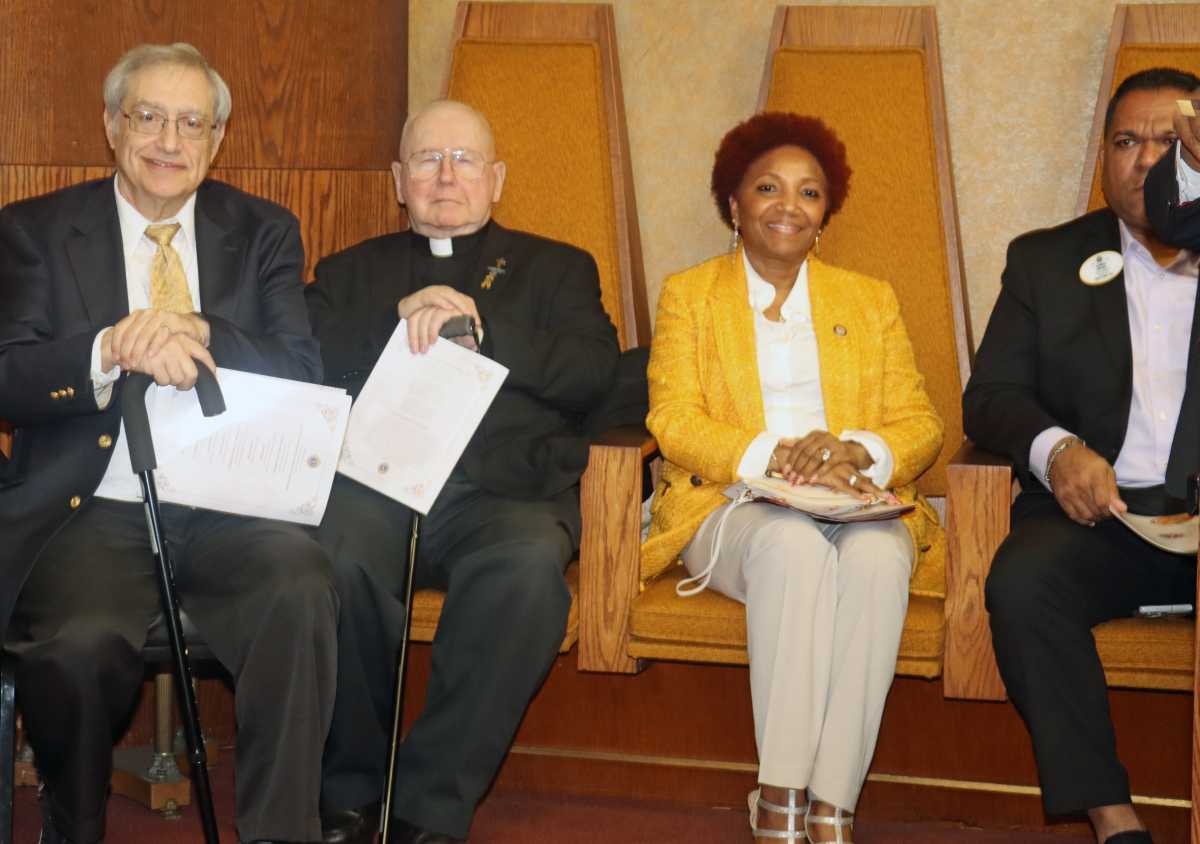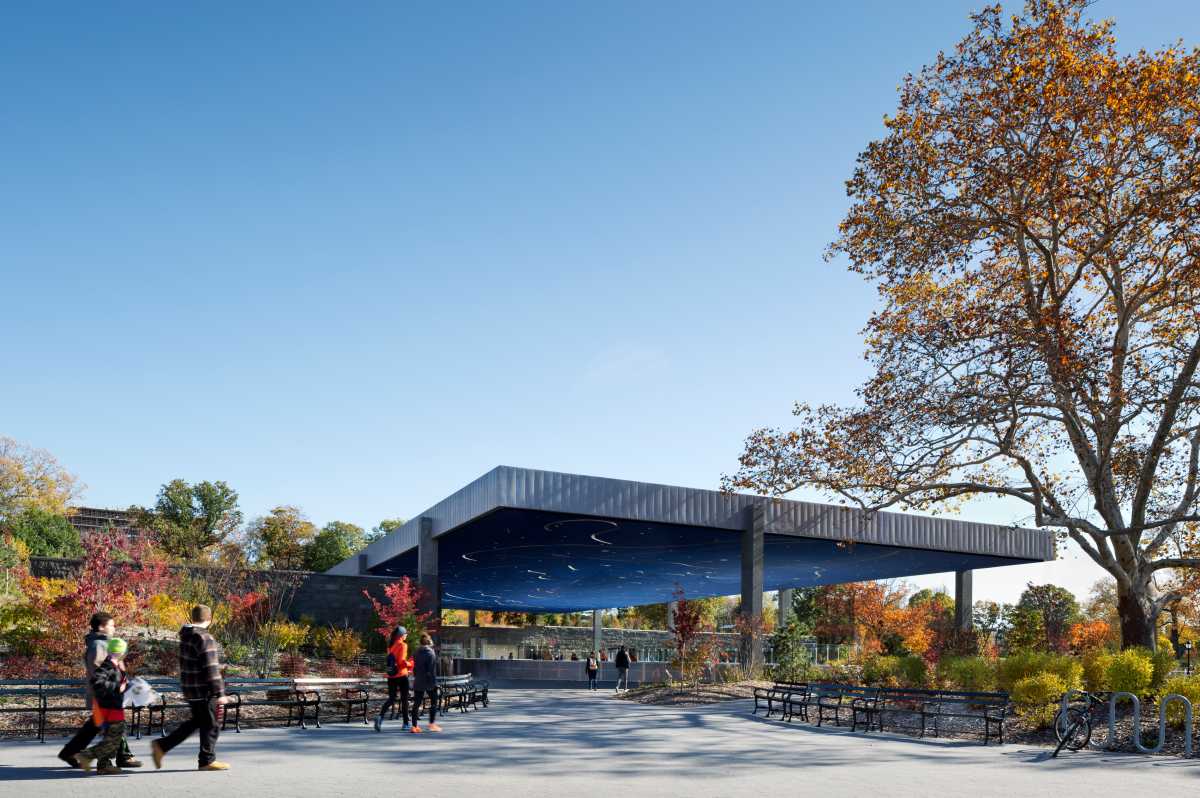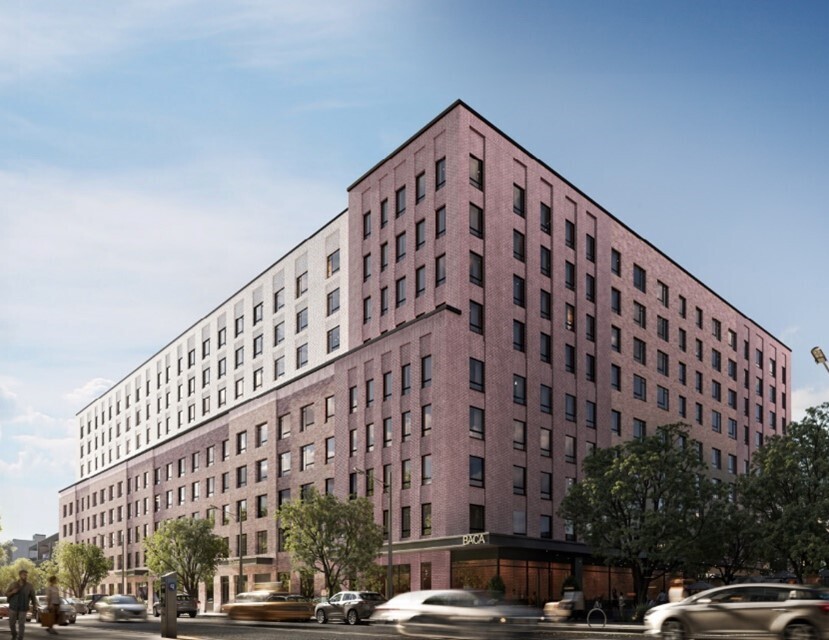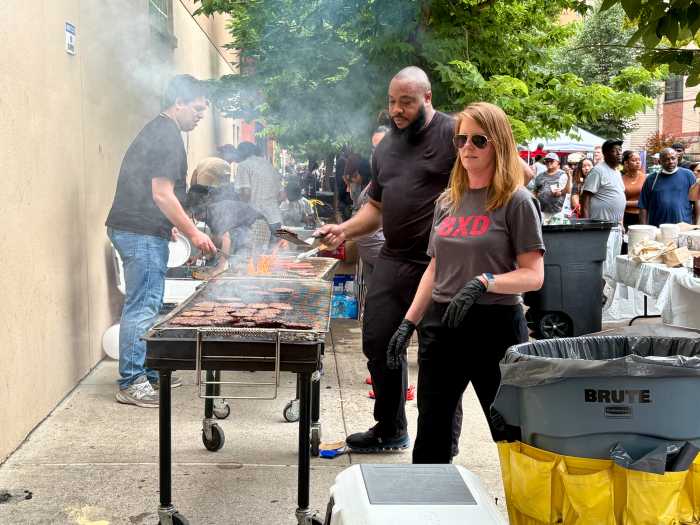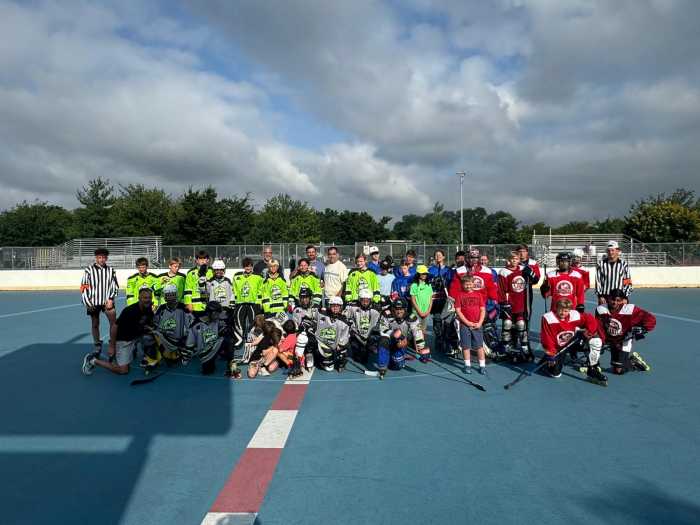The centennial event commemorating the 100th Anniversary of U.S. involvement in World War I was scaled back due to rain yesterday — lighter on speakers in a quiet corner of Times Square, heavier on ceremony. It took place as news was breaking about the Pentagon’s search for military options in Syria, hours before missile strikes were launched Thursday night.
A handful of passersby paused as re-enactors wearing olive-green wool uniforms stood at attention. Current soldiers from the Times Square recruitment center looked on, and members of a veterans group presented a wreath while bagpipes played.
The wreath was laid at the base of a statue depicting WWI chaplain the Rev. Francis P. Duffy, one of 102 often-overlooked Parks Department memorials to an American forgotten war.
More than 110,000 American servicemembers died during World War I, a larger number than in Vietnam and Korea combined. After America’s brief engagement in what was supposed to be the war to end all wars, monuments to those soldiers began to spring up across New York.
A war that touched the entire city
War deaths affected neighborhoods around the city, “across class, race, and ethnicity,” says Jonathan Kuhn, director of art and antiquities at the Parks Department. The monuments reflected that. Many were paid for entirely through citizen contributions, Kuhn says, sometimes through local political clubs.
Many of the statues are of a certain type: conceived and constructed at a time just before sculptures representing figures dropped out of style. Some are so-called “Doughboy” statues, the everyday infantrymen who bore the brunt of the war, a continuation of “the figure of the citizen soldier” that began after the Civil War, according to Jennifer Wingate’s study “Sculpting Doughboys.”
They strike different poses: bold and backed by a rippling flag in Abingdon Square off West 12th Street. Or a group sculpture in Washington Heights, two comrades supporting another.
That one was sculpted by someone famous, Gertrude Vanderbilt Whitney, from whom the art museum gets its name. But others were carved by lesser-known immigrants new to America.
There are some that represent large groups of the dead: the Prospect Park War Memorial records the names of 2,800 Brooklynites who died in the war. Others memorialize a smaller set of people, meaning there are many of the monuments — they make up one ninth of the Parks Department’s collection of 850, according to Kuhn, more than any other war.
As with much of New York’s landscape, this has something to do with master planner Robert Moses, who apparently didn’t care for the unplanned, unruly spread of community-based war memorials. After WWII, Moses pushed for large borough-based memorials. That model stuck for later wars, and after 9/11, the Parks department mostly deferred to the main Ground Zero memorial, with a few tributes in city parks.
For this reason, the WWI memorials are numerically common throughout the city, though you might walk by them every day without noticing (a full list is available here), small silent monuments to a 100-year-old war with lasting consequences.
Some of the statues have so lost their power of reverence that they’ve been subject to vandalism over many years: “Vandalism knows no decade,” says Kuhn, the antiquities director. A handful have been restored and replaced, and one originally in Highbridge Park is now being refurbished in time for a fall exhibit of WWI memorials.
Bringing the past into the present
At the Rev. Duffy statue Thursday, Bruce Meyerson of the Father Duffy Coalition grumbled that the Times Square statue was always in danger of a lack of “reverence and respect.” It is, after all, Times Square.
For one day at least the statue was paid reverence on a lightly observed war anniversary.
The 48-star flag had its moment and the re-enactors brandished their weapons, their old tin helmets blocking weather. After half an hour they departed and Duffy’s statue was left to the rain.
Yet with ongoing war in other parts of the world, and renewed action by American military personnel, and President Donald Trump’s change of heart after the use of poison gas in Syria, once again, who can say that history is past?











